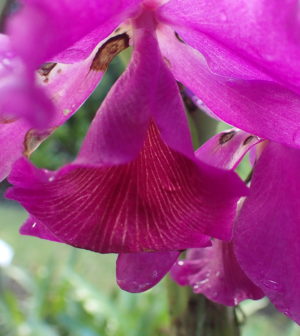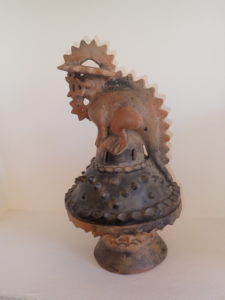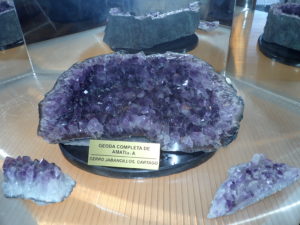- Vlog 48-This SMALL TOWN in Matagalpa has BEAUTIFUL HOUSES!Posted 1 year ago
- Vlog 47-Driving TOUR in the North City of Nicaragua “ESTELI”Posted 1 year ago
- Vlog 46- Leon during Holy Week A GREAT TIME TO VISIT!Posted 1 year ago
- Vlog 45- Moving to Nicaragua – How to Relocate SuccessfullyPosted 1 year ago
- Vlog 44-Fireworks in Leon NicaraguaPosted 1 year ago
- Vlog 43- Is it true Why No Rental Properties in Poneloya & Las Penitas NicaraguaPosted 1 year ago
- Vlog 42-This is the TRAFFIC at NIGHT in Esteli, Nicaragua.Posted 2 years ago
- Vlog 41- Cultural SHOCK in Reverse Trip to the USA from NicaraguaPosted 2 years ago
- Vlog 40-Is U.S Real Estate Market impacting Nicaragua?Posted 2 years ago
- Vlog 38- Why choosing an expensive area in Nicaragua can be a mistakePosted 2 years ago
Bougainvilla Hotel

By Patrick Werner
Intelligence and Dimwittedness
Leon Tolstoy, in his War and Peace, proposed that all important ideas are simple. A good example is a hotel I recently stayed at in Costa Rica, that clearly showed how the important ideas of tropical flora and geology can create a magnificent hotel. Neotropical anything tends to be more vivid and striking than in the temperate world, and this is the attractiveness of the tropics. Moreover, unexpected rock crystals and minerals simply add to the striking beauty of this biosphere when an intelligent mind puts together in one place the beauty of both neotropical flowers and geological crystal and mineral forms. Rather than concentrate on the nation´s beaches, which are very similar to those in Nicaragua, the builders and designers of the Bougainvillea Hotel outside of San Jose, Costa Rica, created a flower garden at the hotel that was four hectares in area. They obviously collected plants from all over Costa Rica, with a concentration on unusual trees, bromeliads, and striking orchids. And they put them together with large expanses of lawns, so that the plants were not all mushed together. An example was the planting of the Brugmansia candida, or angel trumphet tree, with large, hanging, aromatic white flowers. The tree was within a few feet of the window of the restaurant, and a bird feeder was place by the window. In early morning, the feeder was full of the national bird of Costa Rica, the clay breasted robin, or Turdus grayi, along with an occasional tropical squirrel. What is a bit unusual is the use of the Brugmansia tree as an ornamental that it is perhaps the most common hallucinagen plant used by native shamen for thousands of years. In some countries it is ignored; in Costa Rica it made a magnificent addition to the hotel gardens. The orchids included Oncidiums, Maxillaria, a Laelia superbiens, maybe the largest orchid in the tropics, and a two leafed hybrid of the Cattleya dowiana and another Cattleya, possibly a patinii or skinneri. Its gold veined lip marks it as the showiest of all the Cattleyas.
The hotel also had a very large collection of crystal and mineral specimens, all from Costa Rica. Prominent were the several examples of geodes, hollow with many amethyst crystals inside, several varieties of petrified wood, and many examples of iron pyrite crystals. It is called fool´s gold, but in many instances contains gold, silver, or nickel.
The effect of the flower gardens and crystal collection was to create a unique and beautiful setting for the Bougainvillea Hotel. It was located at about 1400 meters in elevation, which obviated the need for sealed, air conditioned environments to keep out the blast furnace heat of lower tropical elevations.
I write these words because of the beauty of the hotel, and because of these elements are all present in Nicaragua. But there is no hotel that remotely resembles the Bougainvillea or that has used Nicaragua´s abundant tropical flowers and its wealth of minerals for any use whatsoever. As regards neotropical orchids, Nicaragua has at least 800 varieties, including the Cattleyas, Laelias, Oncidiums, and Maxillaria. Nicaragua has abundant Brugmansia, both the white flowered version as well as the pink flowered version. And it has the Cattleya dowiana on the Nicaraguan side of the San Juan River.
What is ironic is that Costa Rica has no precious metal mining, while Nicaragua has the largest precious metal mining operation in Central America, with total domestic and export production of gold and silver approaching 400 million dollars this year. In the numerous gold mines, and some old silver mines, there are found the pyrites, calcites, malachites, quartzes amethysts, and very abundant fossil woods and agates that the Bougainvillea displays so well, Here they are ground up to obtain the precious metals and no one sees them at all.
The hotel also has dozens of apparent pre-columbian pottery on display, most from Gran Nicoya, but with a new pieces from farther north. But what the owners did was to make exact replicas of original pieces, and not display grave looted pieces.
What is obvious is that all of the beauty in the Bougainvillea Hotel in Santo Domingo de Heredia, Costa Rica, is present in Nicaragua. What has not happened is for someone who knows of these thing to put them together, without air conditioning where the public, tour operators, and captains of Nicaraguan tourism, can see them.
Nicaragua calls out for an intelligently put together mountain lodge in the northern mountains of Nueva Segovia. The elevation is there, up to 2100 meters or 7,000 feet. Expansive stretches of untouched cloud forest are there and innumerable orchids and neotropical plants, as are the quetzal, tropical trogons, and bell birds. And there is more than ample space for horse trails and mountain bike trails. What is needed is intelligence, imagination, a bit of capital, and some work in collecting specimens and rock samples. The Segovias have a very diverse geological base, with all the minerals found in the Bougainvillea Hotel as well as untold tons of several kinds of marble, high waterfalls, and several mineral hot springs. What is sometimes forgotten is that there are affluent birders who can afford a $3,000 pair of Leitz binoculars and can afford a mountain trip to look for tropical birds in an unknown area, like Nicaragua. It just needs a little marketing, and a place to stay in the mountains. A week before going to Costa Rica I wandered the highest mountains of Nicaragua on the finca of old friend Joaquin Lobo. There I saw many orchids, full blown cloud forest, and a female quetzal, old Spanish gold mines and a natural swimming pool carved out of solid granite by Hurricane Mitch. It is all there.
All important ideas are simple, and the important idea of a first rate mountain hotel needs to come forth. All the elements are here, except maybe a bit of imagination. Nicaragua can do better.
Pictures:
- Cattleya hybrid of C. dowiana and possibly C. patinii, with gold veins on the flower lip.
- Copy of Potosi applique incensario, Gran Nicoya, 6th-10thcentury A.D.
- Geode with amethyst crystals inside.


